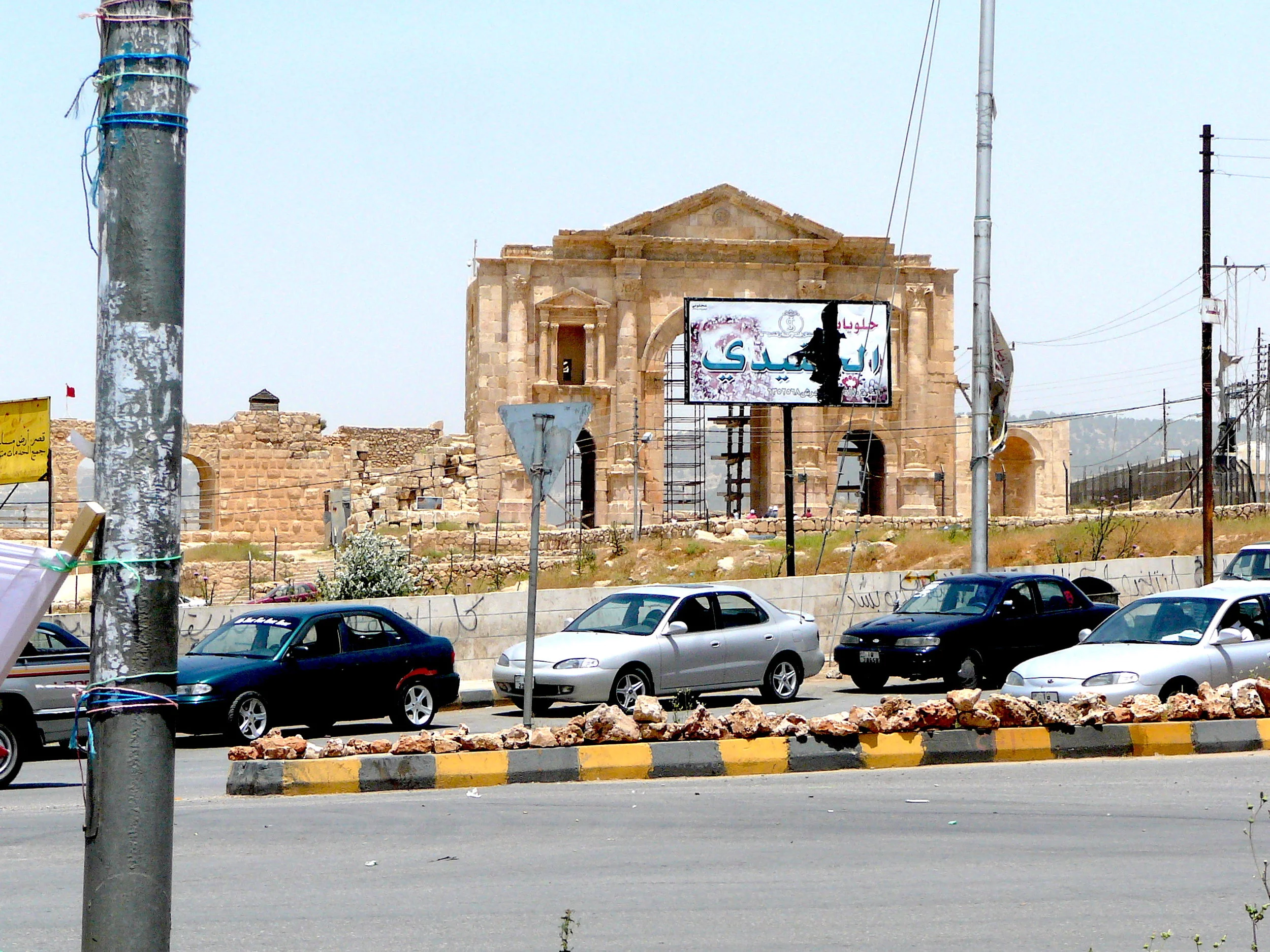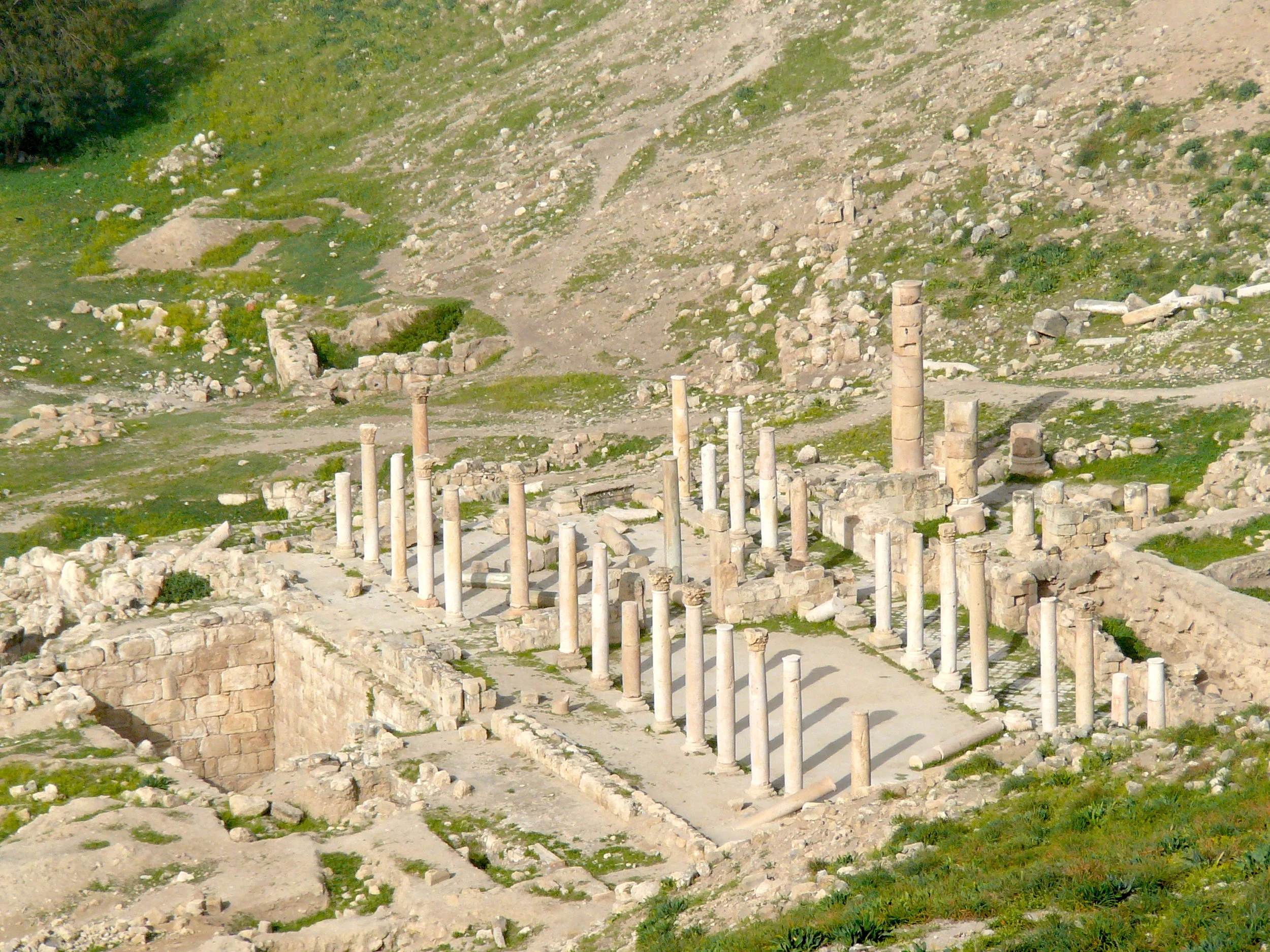Tuesday 05.01.18

The Case of Regional Economies
A holistic and ultimately successful development plan of regional economies demands close attention to the strategic resources, assets, and points of identity forming a region. Much has been said about developing rural economies. In our attempts to understand the essential dynamics that give them their specificity and uniqueness, we have availed ourselves not just upon economic factors but also upon the ecological, geological, and cultural foundation which has historically proven so determinative. After having studied and planned more than 20 regions worldwide, we have found that rural economies are more similar than different.
This post reflects on our experience in Jabal Ajloun (Arabic: عجلون), a hilly region in Jordan that boosts hundreds of villages and contains the historic towns of Ajloun and Jerash.
The Ajloun landscape is one of a kind in the Middle East. Photo shows view from the Ajloun Castle, a 12th-century Ayyubids-built castle nestled on one of the highest hilltops in Jabal Ajlun. Known as "the castle of the faubourg", its name resonates with the region’s rural economy and the various small settlements that interwind with agricultural lands, and historic and natural landmarks until this day. Photo © OHK Consultants.
Few places in Jordan could have supported such a rich ecology and heritage in Ajloun, and the layers of this history are still visible throughout the region. Though perhaps a mere coincidence of geology and climate, the mild temperatures, comparatively high rainfall, and fertile soils of Jabal Ajloun have nonetheless supported a rich, rural landscape that even today remains prominent in the imagination of Jordanians.
Any plans in this area of Jordan are usually met with intense scrutiny and concern for the impacts of such development on the sensitive and unique environment of Northern Jordan. Our study of land uses illustrated the need for rational planning in rural areas and stressed the importance of thoughtful controls and clear mechanisms to organize development in a way that preserves natural (and particularly forested) landscape in Jordan.
In order to define Jabal Ajloun spatially, it has been necessary to reject the somewhat arbitrary administrative boundaries imposed upon Ajloun, represented by the three governorates (Ajloun, Irbid, and Jerash) and three capitals that encompass the region, and to expand our spatial understanding beyond the rigidly geopolitical. The boundaries we have established for the Ajloun region follow the contours of the land literally and figuratively: the areas encompassed by the boundary share both a geological character which has contributed to the unique ecological, arboreal, and agricultural nature of the region, as well as an exceptional cultural heritage found nowhere else in the country.
Urban sprawl in rural economies is affecting their prime resources. Ruins of Greco-Roman settlements, like the City of Gerasa, known today as Jerash (Arabic: جرش), are flanked by roads, cars and urban density that houses tens of thousands of homes. Photo © OHK Consultants.
Thus, the lands embraced by our boundary share a common climate, fertility, altitude, and cultural identity, including a unified vernacular architecture and pattern of land tenure. Roughly, our boundary encompasses the elevated limestone dome—known historically as Mount Ajloun or Jabal Ajloun—that gives the region of Ajloun its commanding height, bounded by the Jordan Valley to the west, the Zarqa River to the south, the Irbid plateau to the north, and the deserts beyond Jerash to the east. In total, Jabal Ajloun measures 921,893 dunums, or nearly 922 km2—an area which constitutes nearly 1% of the total area of Jordan.
There are six ways for the visitor to approach Jabal Ajloun, and each entrance is a threshold, offering a glimpse of the landscape within. From the southeast, the approach to Jabal Ajloun crosses the Zarqa, a river of biblical renown, winding uphill past farms and eucalyptus trees, eventually giving way to the yellow Rendzina soils of the southern Hauran. From the east, the visitor stops in the shadow of Hadrian’s Gate, ancient entrance to Roman Jerash, and ascends westward into the olive groves and limestone cliffs around Sakib. The northeast approach passes rumbling quarries, only to emerge amidst antiquated, sleepy villages of stone. In the north, the road from the bustling Kura District dips into a wadi and rises amidst the oak forests of Birqish. In the northwest, the visitor encounters the Roman city of Pella, and follows the ancient Roman road upwards into the highlands, along valleys scored by the grazing of goats. And to the west, the road rises from the sweltering Ghor, following the contours of a lush wadi inhabited for millennia.
No approach to Jabal Ajloun is the same, and yet the experience of arriving at a place unlike any other in Jordan pervades them all. In choosing the boundary of planning, it is imperative to bring together into one overarching panorama all of the factors which characterize Ajloun, and which can be drawn upon to ensure that it not only survives, but flourishes. The affinity in the hearts of Jordanians informs the vision for Ajloun but a holistic view to understanding its boundaries ensure the right framing. The necessity of striking such a balance between is as important to matching investment to certain areas on the one hand and conserving existing cultural and environmental resources on the other.
Pella (known in Arabic as Tabaqat Fahl, طبقةفحل) is located within Irbid Governorate and about 27 kilometers south of the Sea of Galilee. As one of the Decapolis cities that were founded during the Hellenistic period, it is a huddled into the Jordan Valley, 130 kilometers north of Amman, which frames it as a natural northern boundary of the Jabal Ajloun planning area. Photo © OHK Consultants.
The impetus for carrying out a vision was to identify hundreds of areas of touristic and natural value, thereby not only preserving the natural and cultural resources of the landscape but also channeling public and investment flows to improve livelihoods and bolster the economy. The natural and cultural resources which made Ajloun such a promising backdrop to Amman and a visitation hub resonated with the objectives of a development plan for the Ajloun region.
Working with the Royal Hashemite Court the vision proposed four interlocked elements. First, establishing a knowledge baseline, in which information on the spatial, economic, and environmental state of Jabal Ajloun was determined to better plan intervention. Secondly, setting a high-level, multi-sector economy development plan for the various areas based upon a rigorous asset inventory and demand analysis. Thirdly, developing a master plan that proposes not only a comprehensive land use regulatory framework for the Ajlouni landscape, but also a series of investment packages and a healthy pipeline of projects. Last, this was framed within an institutional setup designed to facilitate the implementation of the transformation and capacity building to ensure its continued alignment with the vision.
Endeavoring a strategy for the region of Ajloun that attracts meaningful development while complementing and conserving the landscape provides an example for how to plan and execute a sustainable future of rural regions. In upcoming posts, we will share a few of the key themes and challenges common in rural economies and explain best practices from our analytical work and the tools we use.
This is part of several posts that provide perspectives and lessons learnt from our economic strategy work in various economies in countries in transition and emerging. For more information about OHK's work, contact us.



